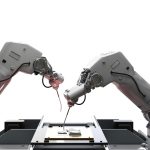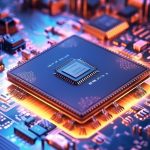Tesla appears to be making significant progress toward mass production of its Optimus V3 humanoid robot. New information suggests that the company has placed a major order for essential components in Asia, marking a pivotal step for its robotics initiative. Industry attention has now shifted from speculation to analysis as experts consider what this order means for the timeline of Tesla’s robotics ambitions. The purchase signals confidence in the evolving Optimus design and could set new expectations for industrial automation. Importers and technology suppliers are monitoring the situation as this move could affect supply chain dynamics in robotics manufacturing.
News reports indicate that Tesla has reportedly ordered $685 million (5 billion RMB) worth of linear actuators from the Chinese manufacturer Sanhua Intelligent Controls, with delivery scheduled to begin in the first quarter of 2026. Recent coverage contrasts with earlier public information, which suggested the Optimus project encountered notable obstacles, specifically around the complexity of the robot’s hands. Skepticism existed about whether Tesla was ready for mass manufacturing, especially as earlier statements implied a smaller production run in 2025. Now, the scale of this component order far exceeds the figures previously discussed, raising industry expectations for what may be a much larger manufacturing push.
Why is Tesla investing in new robotics hardware?
The company is expected to use the ordered linear actuators not just for prototypes, but for large-scale production of Optimus V3. This investment hints that Tesla may be seeking to accelerate its role in robotics manufacturing, expanding its technology portfolio beyond electric vehicles with the Tesla Bot, formally named Optimus. Observers believe a substantial order of this kind indicates Tesla has completed much of the design work necessary to mass-produce its humanoid robot.
How have the companies responded to reports about the order?
Official responses have been measured. A Tesla China representative declined to confirm details, saying,
“No official information about this order that could be disseminated externally.”
Sanhua Intelligent Controls did not address the specific reports, although a spokesperson provided a brief update on their business:
“Our robotics business is progressing smoothly, but we cannot comment on market rumors.”
Despite the lack of official confirmation, the news has had a visible impact on Sanhua’s stock value, reflecting investor perception of potential new business.
What does this mean for Optimus V3’s development?
Industry analysts estimate the volume of actuators could support production of around 180,000 Optimus robots, a significant increase compared to earlier projections. This shift could signal that previous technical challenges—especially involving the robot’s dexterity—have been resolved or minimized. Additionally, Sanhua’s existing role as a Tesla supplier for electric vehicles might have enabled a smoother transition into supporting the robotics program. There are emerging signs that a major production phase for Optimus V3 could begin as early as next year.
Considering the broader context, the trajectory of the Optimus initiative has shifted notably over recent years. Whereas earlier expectations were restrained by reports of engineering hurdles and smaller-scale production goals, the current order for actuators points to greater confidence and readiness. The strategic relationship between Tesla and Sanhua—previously limited to automotive components—has now expanded to encompass robotics-specific parts, representing a tangible commitment to automation and robotics manufacturing at scale. Markets, suppliers, and technology analysts will be watching for further announcements and any confirmed production timelines from Tesla.
If Tesla achieves mass production of Optimus V3, industry dynamics in automation and advanced robotics could shift, especially as component orders of this magnitude affect supply chains and competitive strategies. For business professionals, tracking confirmed deliveries and official statements from both Tesla and Sanhua will be crucial for anticipating broader market implications. For those interested in industrial robotics, understanding the types of components involved—such as linear actuators and their role in humanoid robots—can provide insight into future manufacturing trends. As the competitive landscape develops, ongoing attention to supplier relationships and manufacturing scale is warranted.










